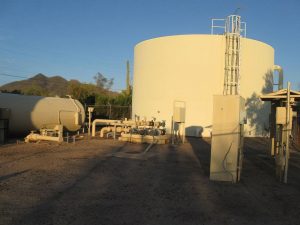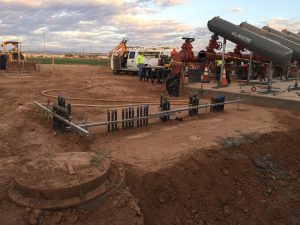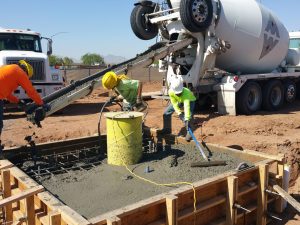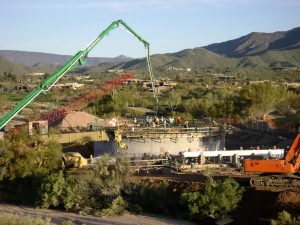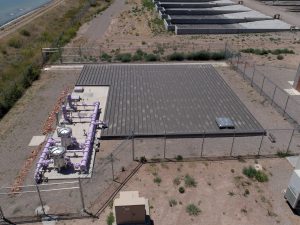Wells
There are different types of wells for different scenarios. First, you must find the water table. The water table is where water starts to be stored naturally underground. This natural storage takes place when water passes through the earth between cracks and cannot go any further. It then piles up and creates the water table. Once one knows how deep they must dig, now they can determine what type of well they need.
Areas with a shallow water table use dug wells. They are dug with a shovel to around 10-30 feet deep. You cannot dig much deeper, or the well could collapse and cave in on itself. The ground should be soft and easy to uproot until you hit the water table. Once there, it is almost impossible to keep digging with the equipment. The well stops a few feet below. Because the well is so shallow, it becomes more likely to get contaminated from an outside source. Harmful materials can seep through the well. In order to deter harmful contamination, stone or precast concrete line the dug well. A cap covers the top, and the surface is elevated from the rest of the ground. Elevating the well surface is important to keep surface water from pooling up and eroding the well. If a drought occurs, the water table lowers for a time. Smaller wells will lose their water until the table fills back up.
Driven wells are not as affected by droughts. They are used for a water table level of 30-50 feet down. The extra depth helps to still have access to water even in the dry season. A weight is repeatedly dropped on the top of a thin pipe driving it into the ground. It goes through the soft soil then can keep going through the water table. This pipe acts as the well. Just because the driven well is deeper than dug wells, does not mean that it is now safe from contamination.
The pipe’s diameter is only around 2 inches, therefore, stone and concrete are not usable to protect the inside. Contamination happens at both ends of the well. To prevent that, the well opening is placed on top of a mound and a cap is placed over. Rainfall and surface water will not be able to interfere. Sand and other substances are fltered out through a screen at the bottom.
Drilled wells are currently the most common used wells, but also the most expensive and hardest to make. They are for when the water table is 100 to 1,000 feet down. Holes are created with heavy rigs through any type of rock or soil. Contamination is extremely unlikely due to the depth of where the water is coming from. Surface contaminants cannot soak down that far into the earth. The well diameter is around 25-50 inches in order to keep the hole from caving in on itself.
The two main pumps used to bring water to the surface of a well are the jet pump and submersible pump. Jet pumps are on the top of the well. It uses suction to pull water upwards. Submersible pumps are inside the well. They act to push water towards the top. When water is sucked up from the well, the displaced space starts to fill with the surrounding water from the earth. The process of natural refilling depends on the groundwater available in the surrounding area. That is why it is rare that a well must be relocated close to the original spot. The ground water flowing into the well creates a water cone at the bottom due to pressure. This water cone is called the ‘cone of depression’. If two wells are in proximity to each other, the deeper well’s cone of depression will take water from the other. This water placement will lead to the smaller well not being able to produce enough water or stop working altogether.
When a well goes dry, all the groundwater in the area has been used. This absence of water is destructive to the ecosystem because the ground below will never be able to hold water again. The earth compresses and quickly starts to drop elevation. Over years, the ecosystem can change and can be more baron compared to what it looked like before. It is very important that public wells are monitored and have a limit to how much water they can pull out before switching off.

